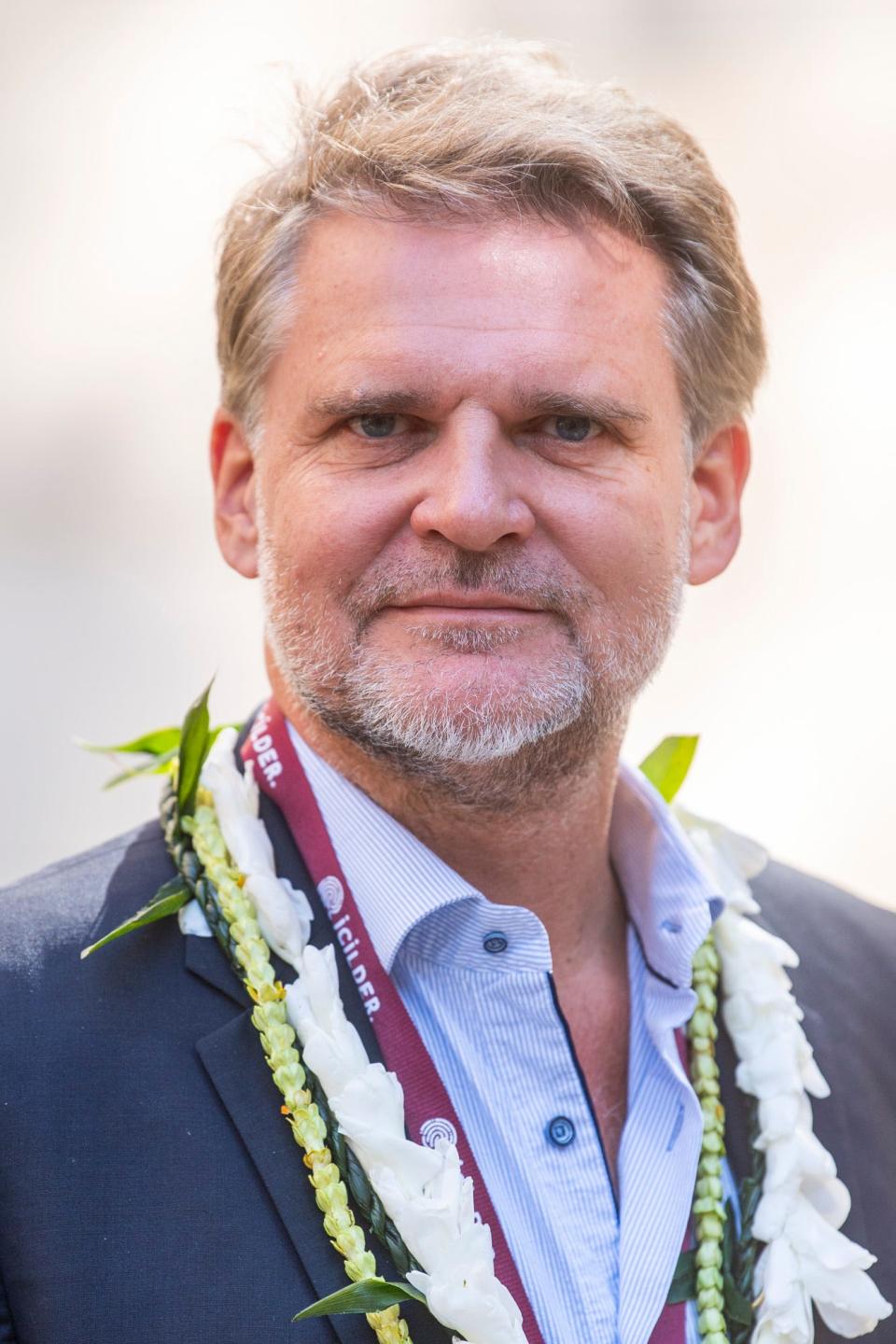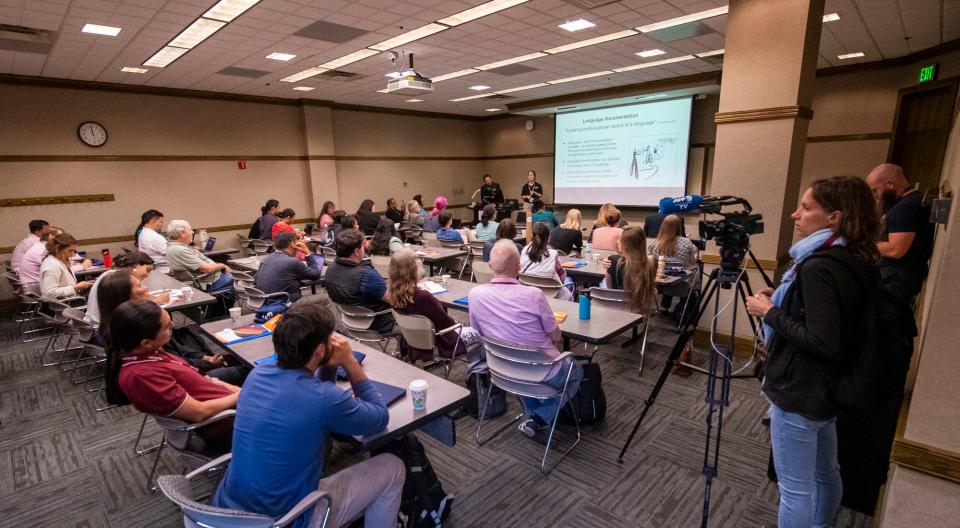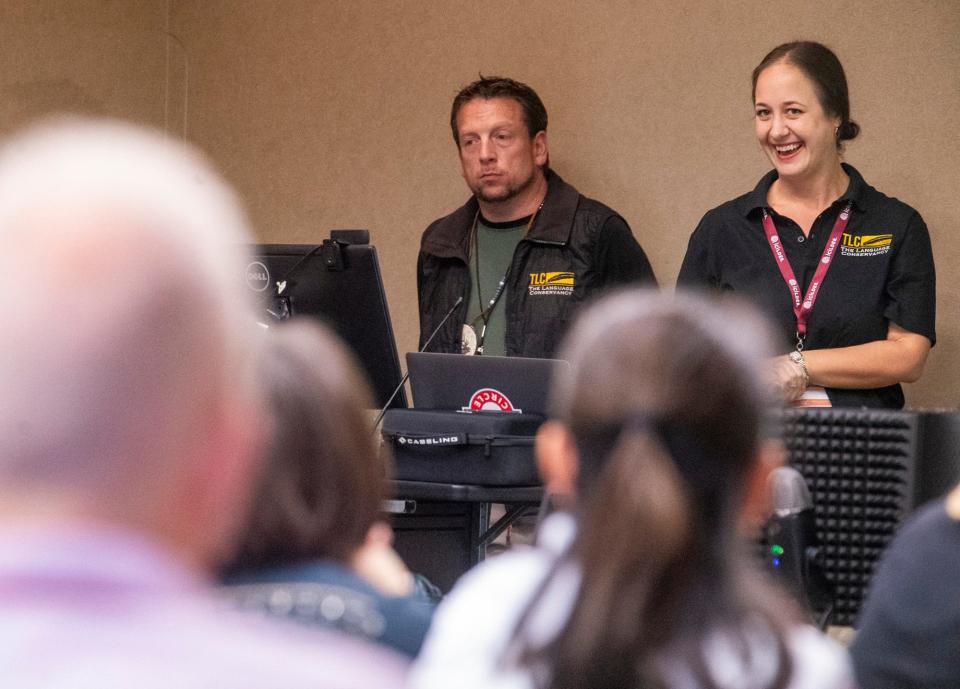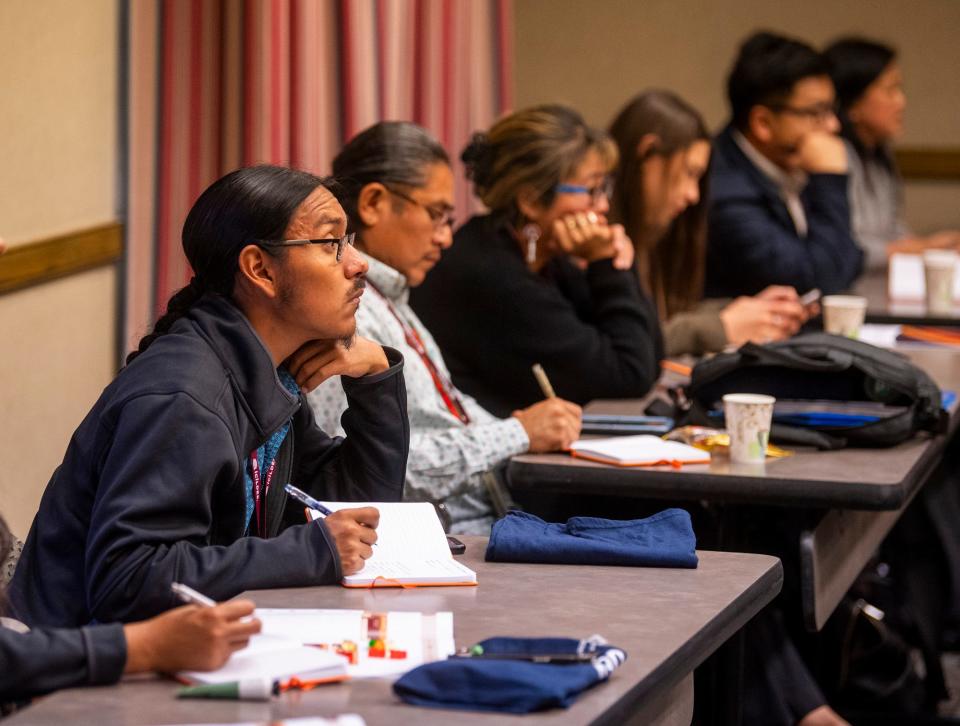Names for everything: 12 countries represented at language conference at IU
Several hundred people representing 40 languages in 12 countries participated in the first International Conference of Indigenous Language Documentation, Education and Revitalization at Indiana University on Oct. 12-14.
From New Zealand to just below the Arctic Circle, linguists, educators and native speakers represented endangered indigenous languages from across the globe.
Wil Meya, CEO of The Language Conservancy a Bloomington-based nonprofit dedicated to language preservation and one of the sponsors of the conference, said most of the more than 6,000 languages currently spoken around the world could one day disappear.
"In the next 50 years, 90% of the world's languages are expected to become extinct or moribund," he said.

"There's so much to do," Meya said, adding there is a "worldwide crisis of extinctions" that will happen as older people who speak indigenous languages die before the native tongue can be passed on in a way that secures its existence.
Bringing educators, linguists and native speakers to Bloomington for the conference, conducted in honor of the United Nations' International Decade of Indigenous Languages, was one way to spread information on how best to keep the languages alive and thriving.

"It takes real effort and commitment and it has to be real intentional," he said.
Many people may not realize that in the United States and Canada, most indigenous speakers are over 75 years old and the time to capture those tongues is slipping away. Meya anticipates that within the next 10 to 15 years, the last generation of indigenous speakers will disappear, as will their languages, unless efforts to document them begin soon.
In opinion: Reflections on language losses this Indigenous People's Day
Why keeping native languages matters
"Language is connection," Meya said.
Meya hoped connections between various indigenous groups at the conference will give participants new and better ways of securing the future of their native tongue. One workshop gave details about how to collect language from native speakers and document it. Sometimes those words and phrases are the basis for an online dictionary created using audio and text. That's something The Language Conservancy is currently helping communities develop.
Patricia Coriz, a member of the Santo Domingo Pueblo in New Mexico, explained her people believe their oral language doesn't belong to just one person, but to the whole community who speaks it. She was one of four people from her Pueblo community, speaking Kewa Keres, who attended the conference. She said there are seven nations in the Southwest that speak the same general language.

She listened as Bryan Hudson, a linguist at The Language Conservancy who speaks Shoshone, talked about how to encourage people who speak native tongues to share all the ways a word can be used — as a verb, noun, adjective or other descriptive forms.
David Stringer, an associate professor in the second languages department at IU, was listening as well, before he gave a presentation about language maintenance in endangered biocultural ecosystems. A main point he shared is that when teaching language, it's vital to keep using the "mother tongue" for many years.
For youngsters learning a language, Stringer said they have to hear and use the language until they are 8 or 10 years old before it stays with them throughout their lives. Otherwise, they lose not only the words but the knowledge that's included in that language.
An example Stringer shared is about the Kayao language in Brazil. It has 56 words for bees — relating the type of honey they create, where they live, what they look like and much more. But when indigenous people start speaking Portuguese, they have only one word for bee. Those who don't retain their indigenous speech lose much of the knowledge about not only their language but also their culture and surroundings.

Taking native language back
Janine Pease understands why keeping a language alive so important. She's a member of the Crow Nation and speaks Apsaalooke. The Crow Tribe of Montana lives in south-central Montana and currently has 4,500 fluent speakers out of its 13,400 members. The tribe established the writing of its language in 1973 and has begun language immersion in its school system.
The Crow Nation has seven elementary schools and four high schools. There are 14 elementary classrooms, with students in pre-K through third grade, where Apsaalooke is spoken instead of English.
When students reach fourth grade, they transition into a classroom where English is spoken. In both junior high and high school, students can take Apsaalooke as a modern language class.
Crow also is taught at the digital academy in Montana, Pease said, along with Cree and Black Feet. At the tribal college, understanding the Crow language is required. Crow is also the language the tribal government uses.
It's all in an effort to keep Apsaalooke engrained in the people, from youngsters to adults. Not everyone who is a member of the Crow Nation can speak the native tongue, Pease said. Many are second-language learners.
"It's a varied situation that our children have," she said, adding that understanding Apsaalooke is essential for understanding the Crow Nation.
The Crow have 50 words for horses, Pease said, and 50 words for relatives that go far beyond the mother, father, sister, and brother of English.
"Our language is very descriptive," she said. "Crows name everything."
Reach Carol Kugler at ckugler@heraldt.com.
This article originally appeared on The Herald-Times: Bloomington nonprofit sponsors indigenous language conference

